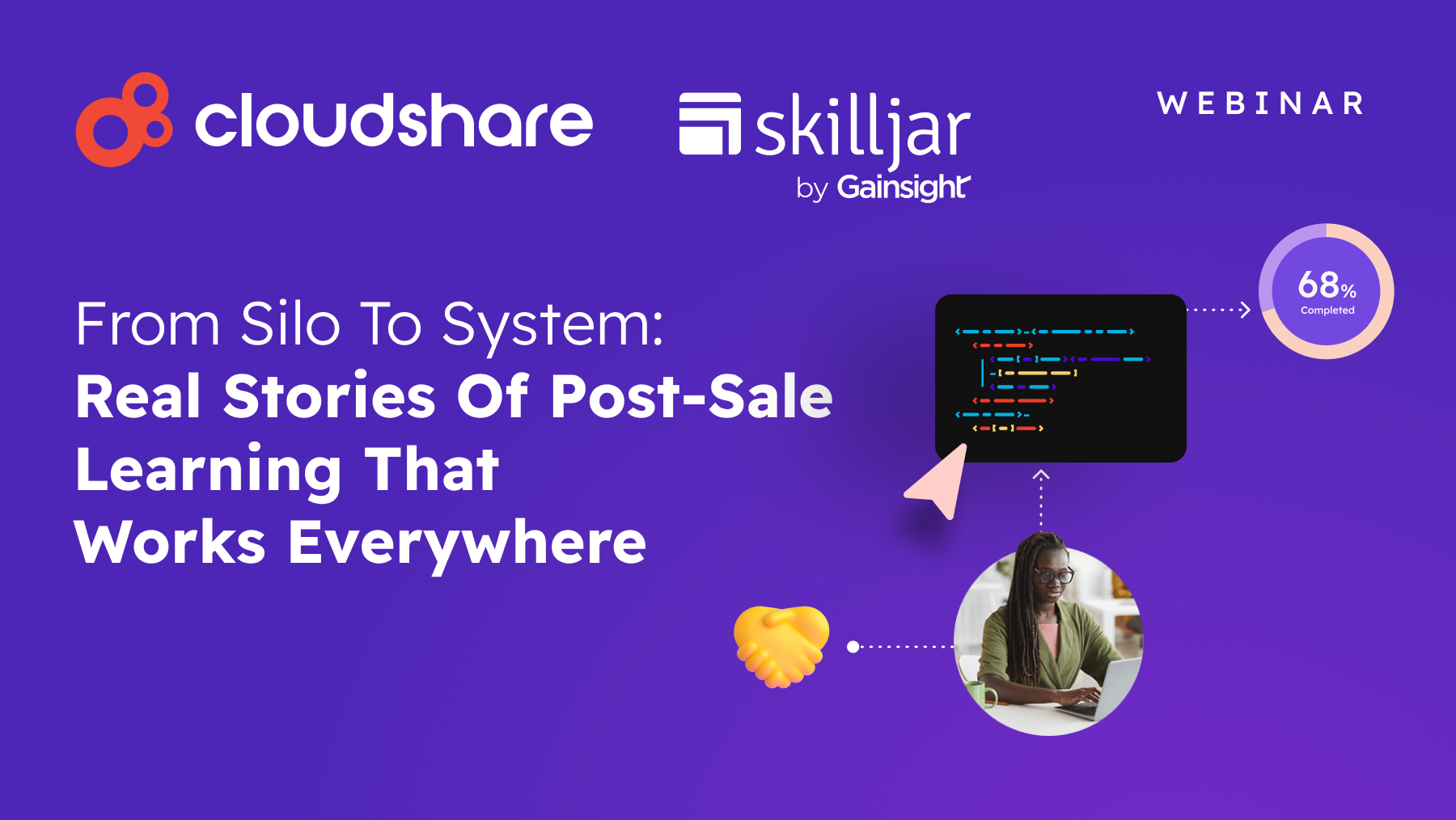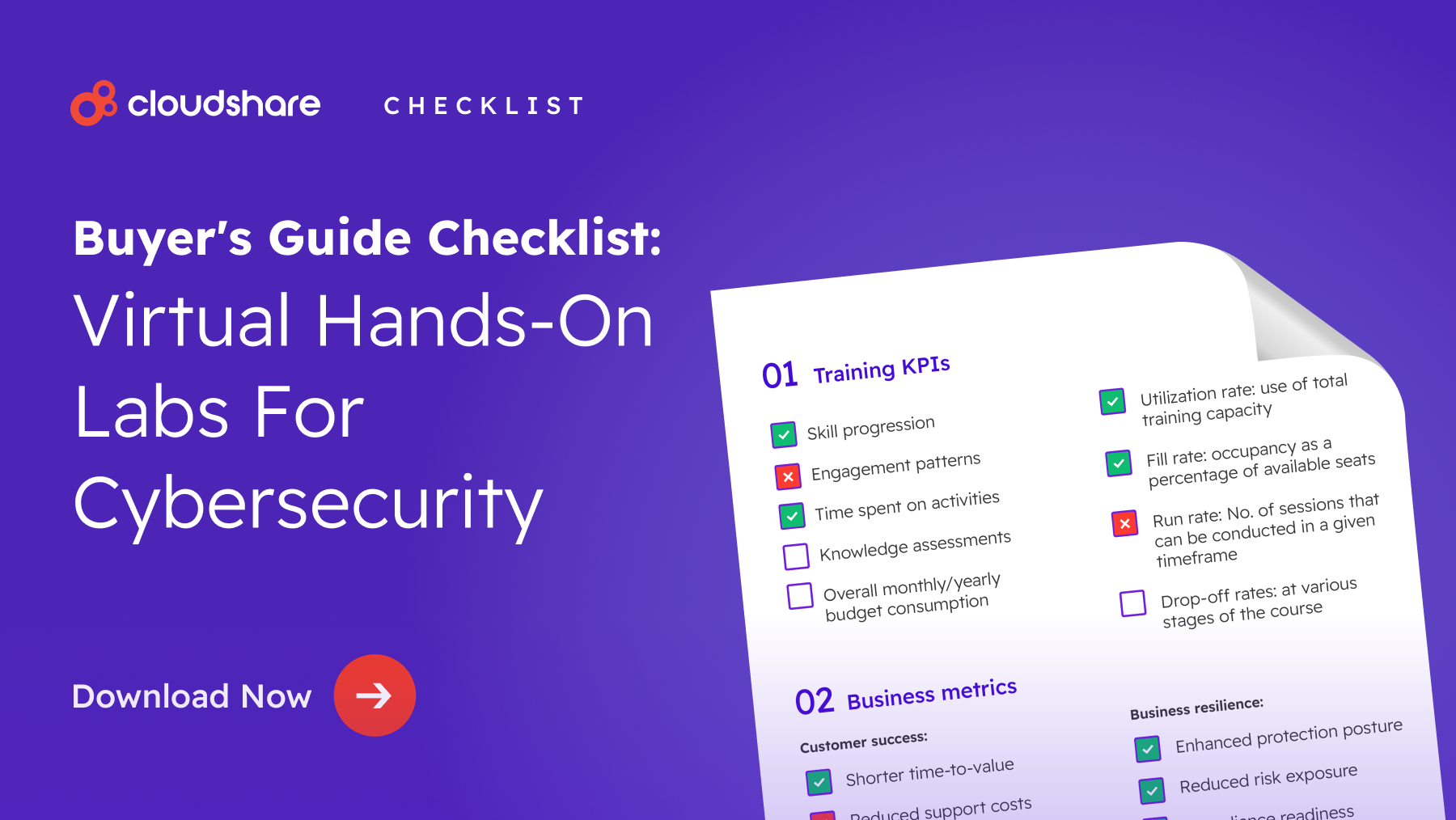
Trade shows, instructor led training, user groups, physical sales presentations. Just like that, traditional in-person opportunities long relied upon for teaching and selling technology are on-hold, and many practices will likely change for good.
But make no mistake, nothing could entirely replace personal, face-to-face contact, particularly when you’re attempting to explain complex solutions and precise applications. For this, you need to see a product in action, showcase it tackling real-world problems, give users access to the tools for a hands-on experience.
So how do you keep IT virtual training and sales enablement personal in an age of social distancing?
We’re glad you asked!
Get Ahead in the Cloud
The cloud is the “great enabler,” offering the potential to eliminate distance, save time and costs, all while reducing the personal gaps resulting from social distancing.
More than ever, companies are realizing the necessity and benefits of being able to reach anyone, anywhere, with only a browser and internet connection. And when it comes to complex sales and training, the way to get ahead in the cloud is by using virtual IT labs and a cloud service provider (CSP) that fits your needs – because they’re not all created alike.
For instance, large commodity ones like Amazon and Google Cloud are great for low-cost storage and acquiring raw processing power. However, they lack the purpose-built tools and automation of specialty CSPs. That means a lot of work will be required simply to build environments capable of replicating products and real-world challenges. You’ll need substantial IT skills to create operating systems, databases, applications, security and more.
That said, if your company has a commodity platform they prefer to use, not to worry. Find a specialty CSP with a solution that can easily “sit on top.” Further, make sure it can seamlessly integrate your other core learning management systems (LMS) and sales tools. By doing so, you’ll eliminate friction and accelerate results.
(WEBINAR) Students Are Bored Out Of Their Minds??

Virtual Tips for Real Results
Nowadays work directly competes with our personal lives for attention. Children need homeschooling and care. Parents and partners are trying to coordinate schedules and share workspaces. Reaching and serving customers and partners across various time zones has its own challenges. So, it’s imperative that trainers and sales engineers maximize engagement. Here are a few tips to consider to do just that:
- Keep it Simple: User-friendliness leads to greater adoption, difficulty leads to disappointment. Make sure your virtual IT labs are easy to use and integrated with other primary tools and resources in a single, centralized platform. Keep that focus on projects and not the processes.
- Convenience Counts: Provide users flexibility with their own time by incorporating self-service and self-paced training. For sales, use hands-on test drives after presentations so users can get a real feel for the product at their convenience. This also shows you have complete confidence in your offerings.
- Hand it Over: Learning by doing is one of the best ways to create memorable experiences, so put exact products in prospect’s and user’s hands. Also, use sandboxes isolated from infrastructure so they can play with solutions without causing damage.
- Real World Experiences: The environments you build should reflect real-world situations that prospects and users can expect on the job – and they should be able to use your tools to solve them. In fact, consider incorporating game-like, problem-solving challenges to bring additional excitement to the experience.
- Virtual Visibility: One of the biggest issues with sales proofs-of-concept (POC) is the “black box;” a lack of insight into the behavior of a user trialing a solution. When it comes to training, you also need mechanisms to gain feedback into what’s working and what isn’t. Make sure the platform you use has features that can provide the right visibility, virtually.
The Show Must Go On
Alright, so those face-to-face events – trade shows to user groups – are on hold. Why not conduct your own, virtually? Doing it online is much less expensive, and because you’re not physically taking participants away from their work, more employers may be willing to let more of their people join in.
Just be sure to provide the right experience and that you’re able to scale. Also, keep in mind that users won’t want to install a bunch of apps to participate or will bow out if the platform performs sluggishly.
Finally, remember that while this pandemic will pass, many employers will realize a remote or blended workforce is not only viable, it can raise cost efficiency. That said, virtual labs and in-person aren’t exclusive; they can be used together for the best of all worlds, while ensuring sales and training continues regardless of any disruption.



